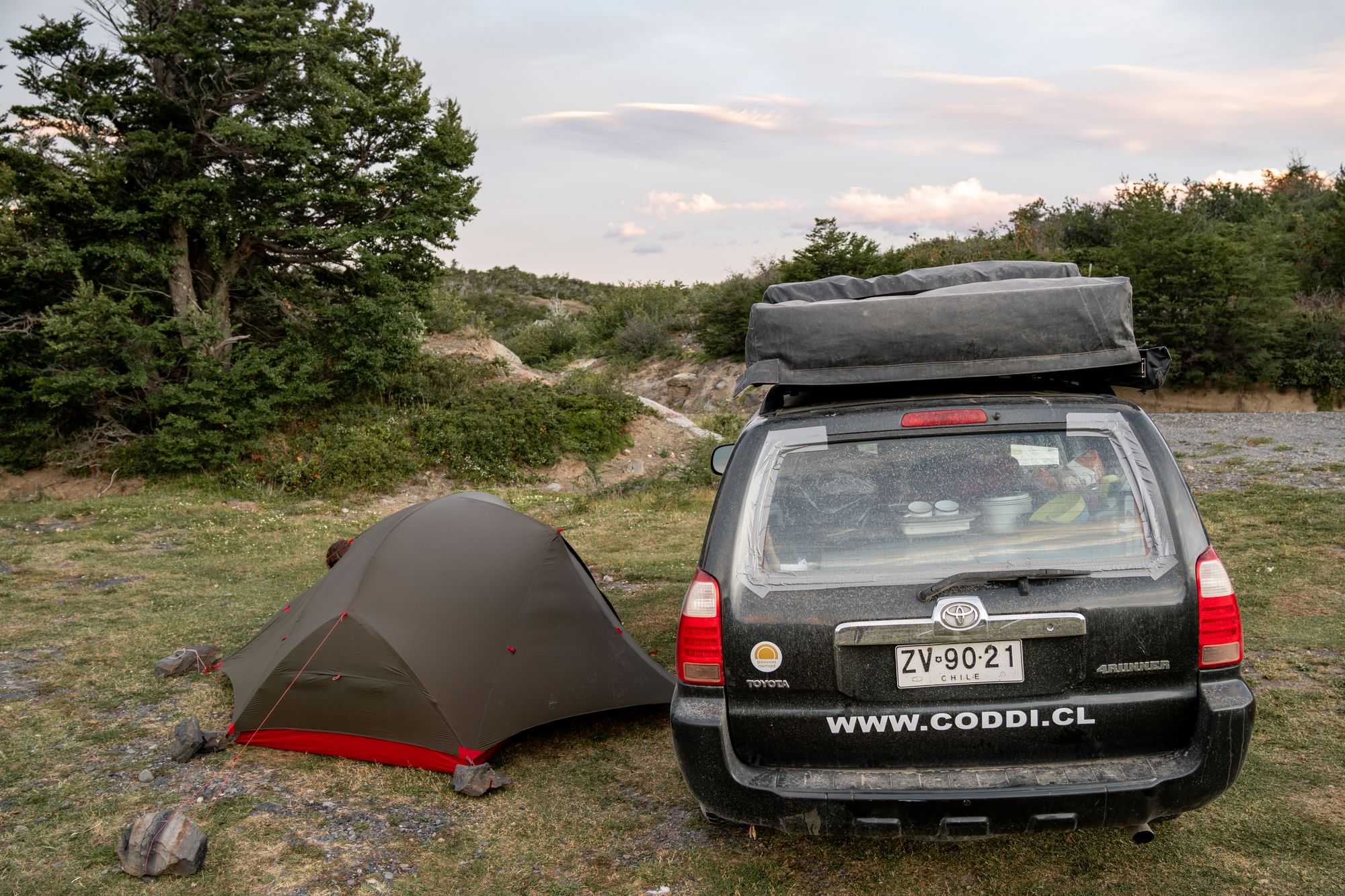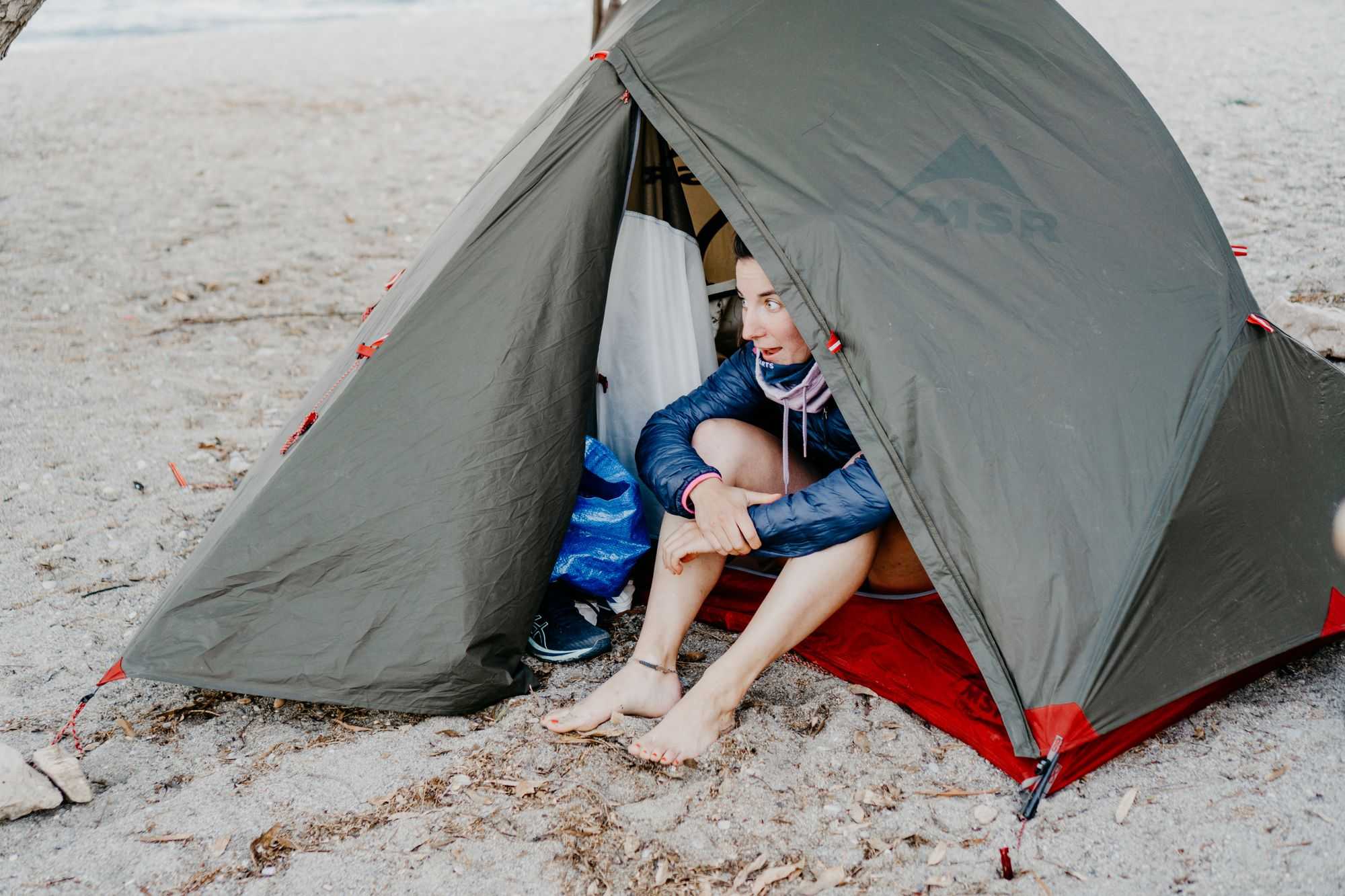The tent - a home to go
Which tent is suitable for my trip? Here are a few valuable tips for choosing your tent.
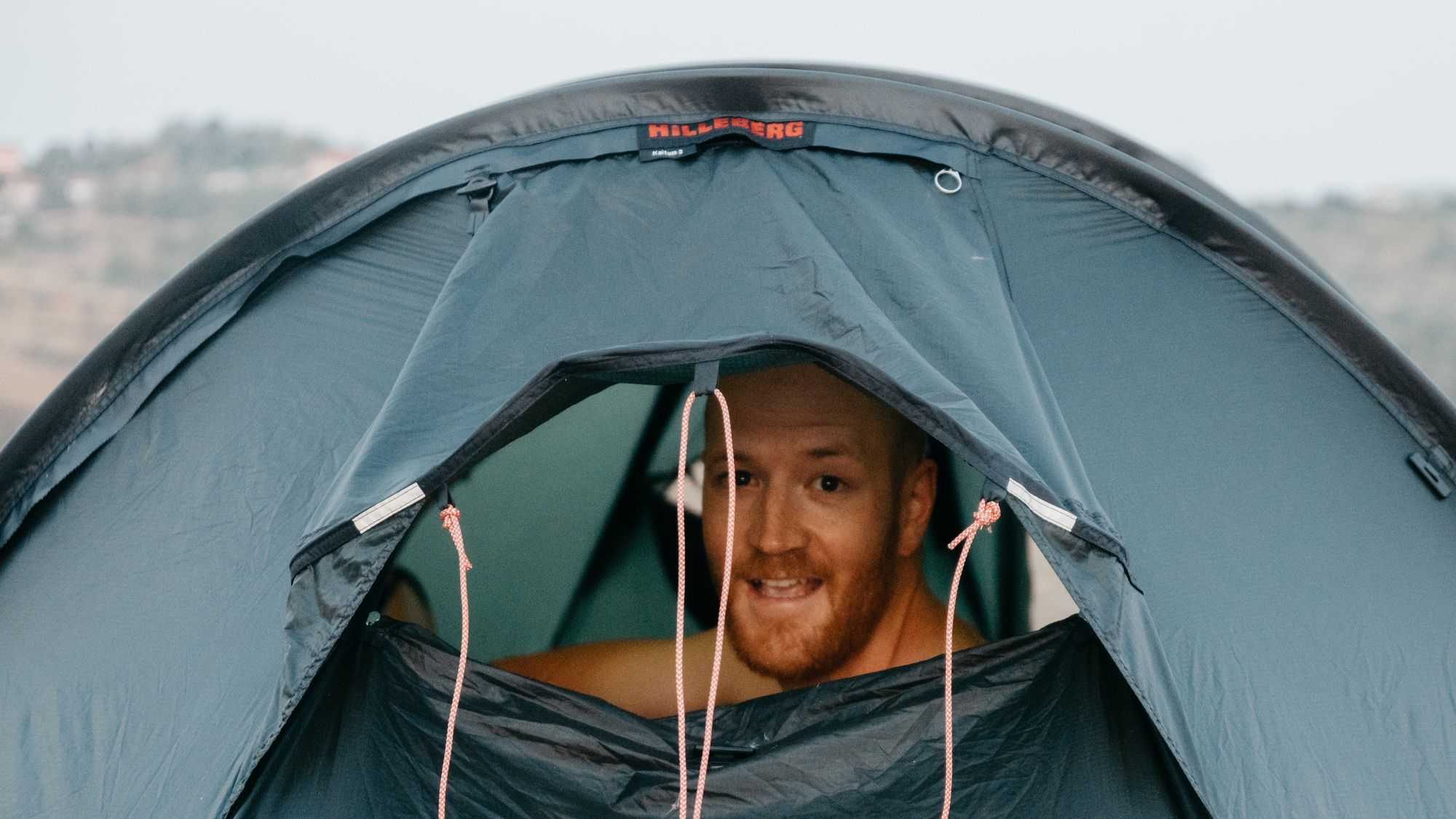
On our travels around the world, we spent most nights in a tent. First on the road by bike, then by car and roof tent. In between, there were always treks on which we also had a tent with us. If you want to be out in nature for a long time, you can't get around this piece of fabric. But choosing the right tent for your adventures can be a challenge. Tents come in a wide variety of colours, shapes and prices. In addition to the tents mentioned above, there is everything from a cheap festival tent to an inflatable outdoor house (yes, there is such a thing), really. Each of these tents has a range of uses, so it makes sense to consider first and foremost what requirements your own tent should meet, how you will be travelling and what financial resources you have available. In the end, it's all about finding the best compromise, because it always is!
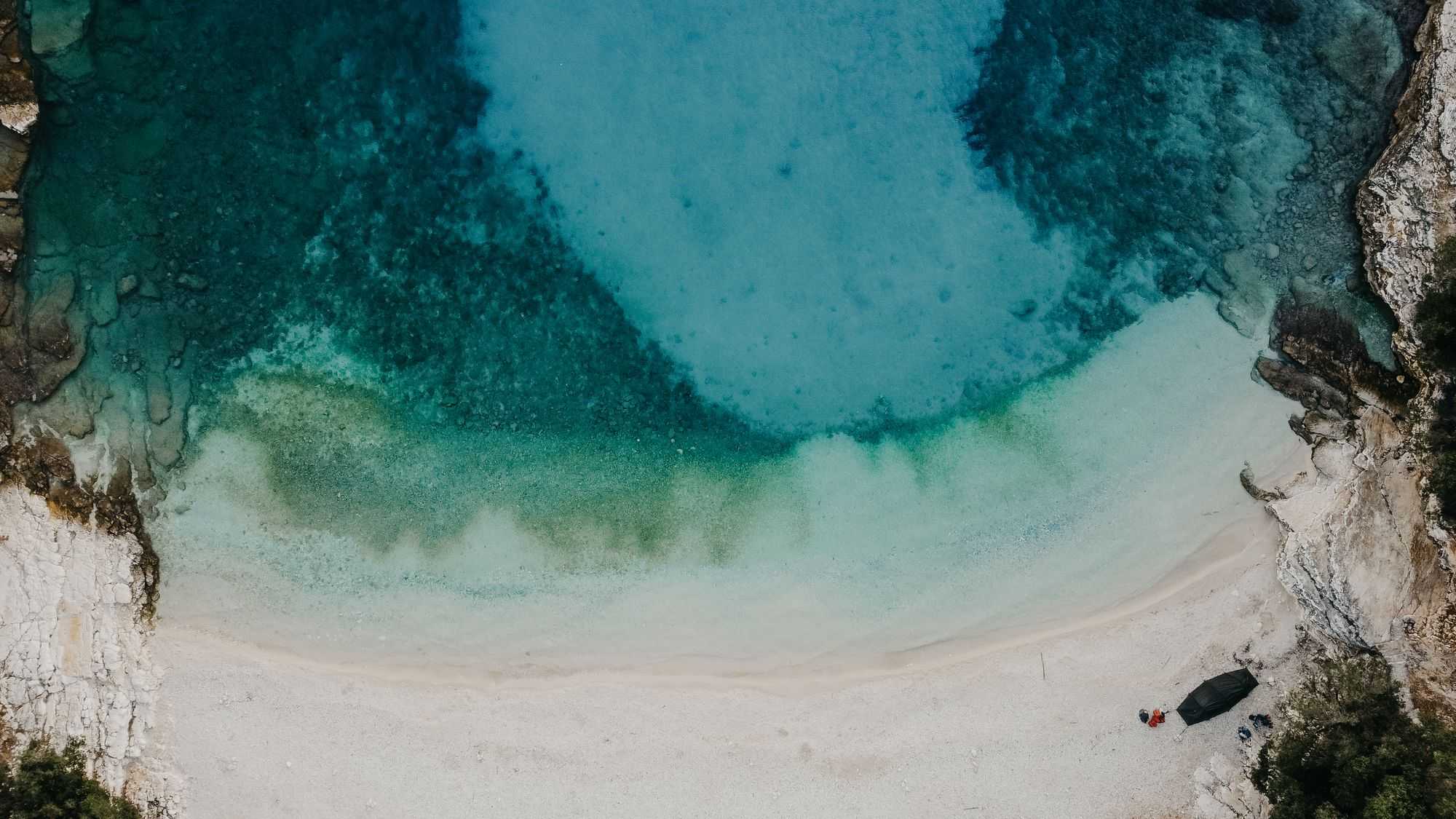
Tent forms
Let me talk about the most common types of (outdoor) tents and their advantages and disadvantages, and then also introduce the two tents (I'll leave out the roof tent here) that we had with us.
Tunnel tent
A tunnel tent has one or more poles that are arranged parallel to each other and do not cross. To pitch it, it must therefore be anchored. Properly positioned in the wind, it can withstand it well, even in strong gusts, due to its aerodynamic shape. At the same time, it is relatively light. The poles are usually attached to the outer tent and the inner tent hangs inside (Scandinavian construction). This has the advantage that the tent can be pitched quickly and the inner tent remains dry even in the rain.
+ Low weight
+ Inner tent stays dry when pitched
+ Plenty of space for luggage
+ Easier to pitch in windy conditions
- Must be anchored
- Inner tent cannot be pitched on its own (additional kits are available in some cases)
- Little load-bearing capacity
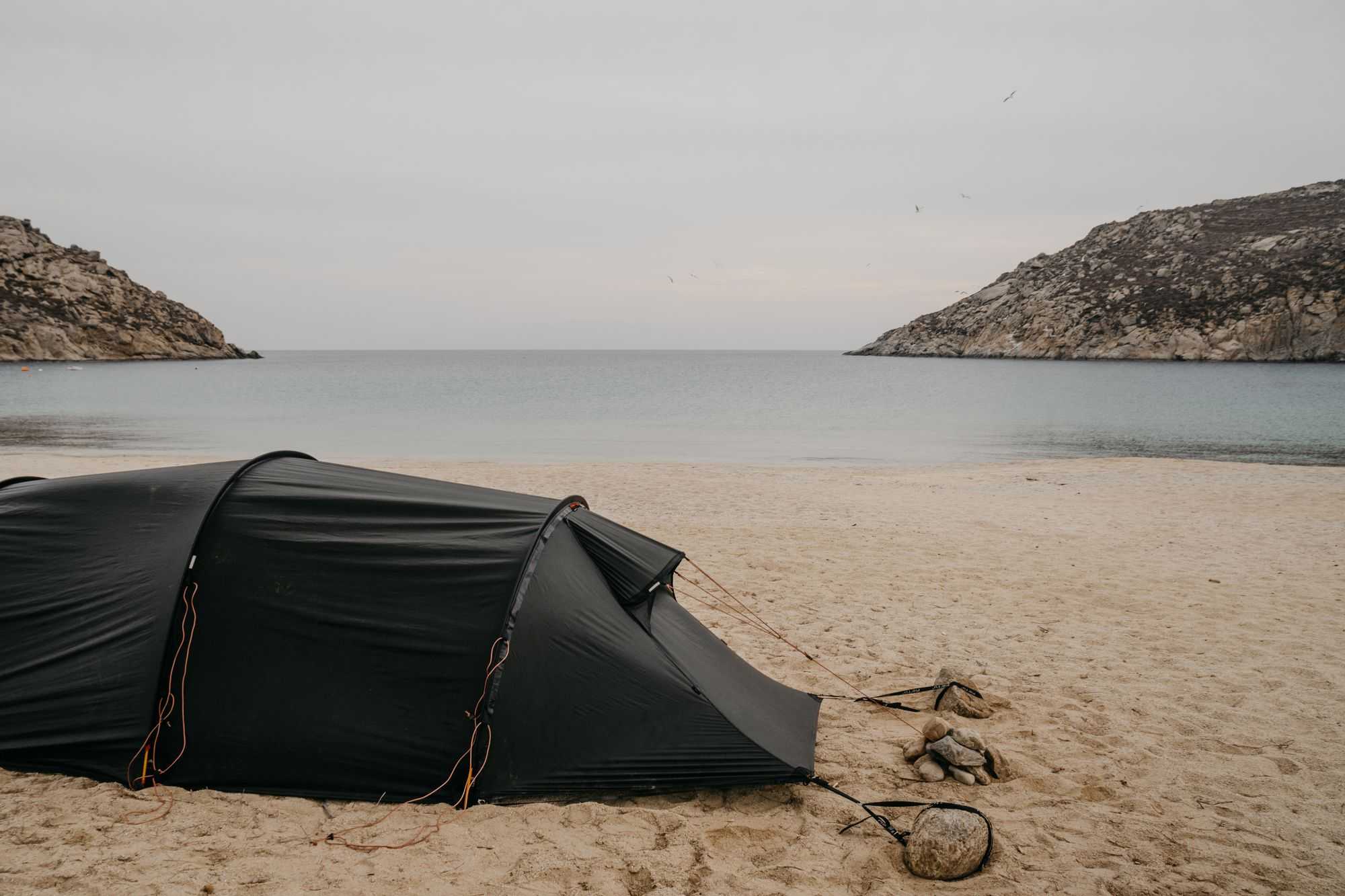
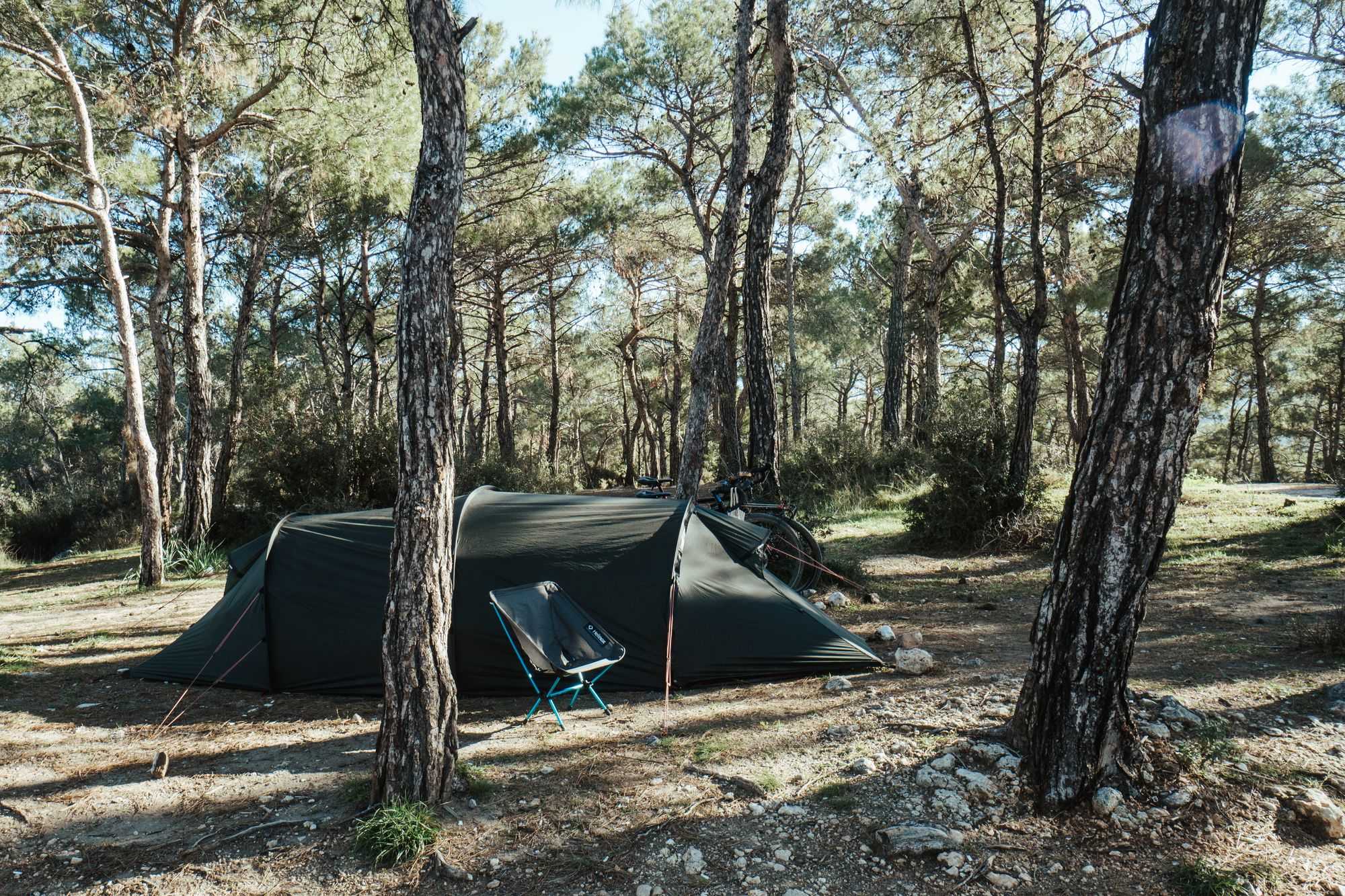
Dome tent
In a dome tent, the poles are generally stretched diagonally across the ground in two arches. Newer tents sometimes also have shorter poles that provide more space. The dome tent is free-standing, except for the vestibule (awning), which sometimes has to be stretched out. This is particularly advantageous on hard ground. Dome tents are more resilient than tunnel tents (e.g. in snow). Usually the inner tent is pitched with the poles and the outer tent is stretched over it (American construction), although there are some exceptions. The advantage is that the inner tent can also be pitched separately, for example on hot nights to protect against mosquitoes.
+ Freestanding
+ Quick to set up
+ Increased load capacity
- Inner tent can get wet during pitching
- Footprint usually smaller
- Higher weight
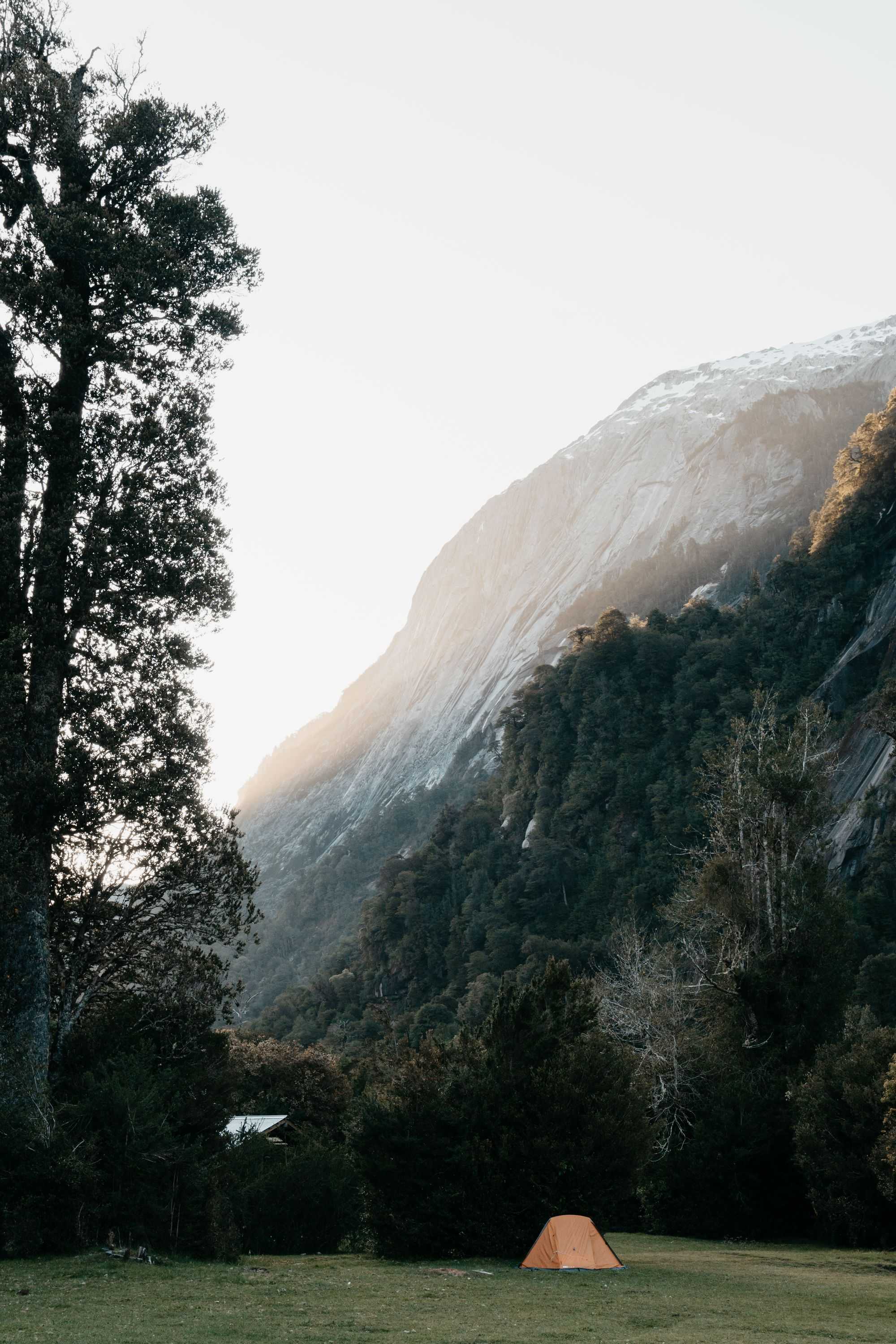
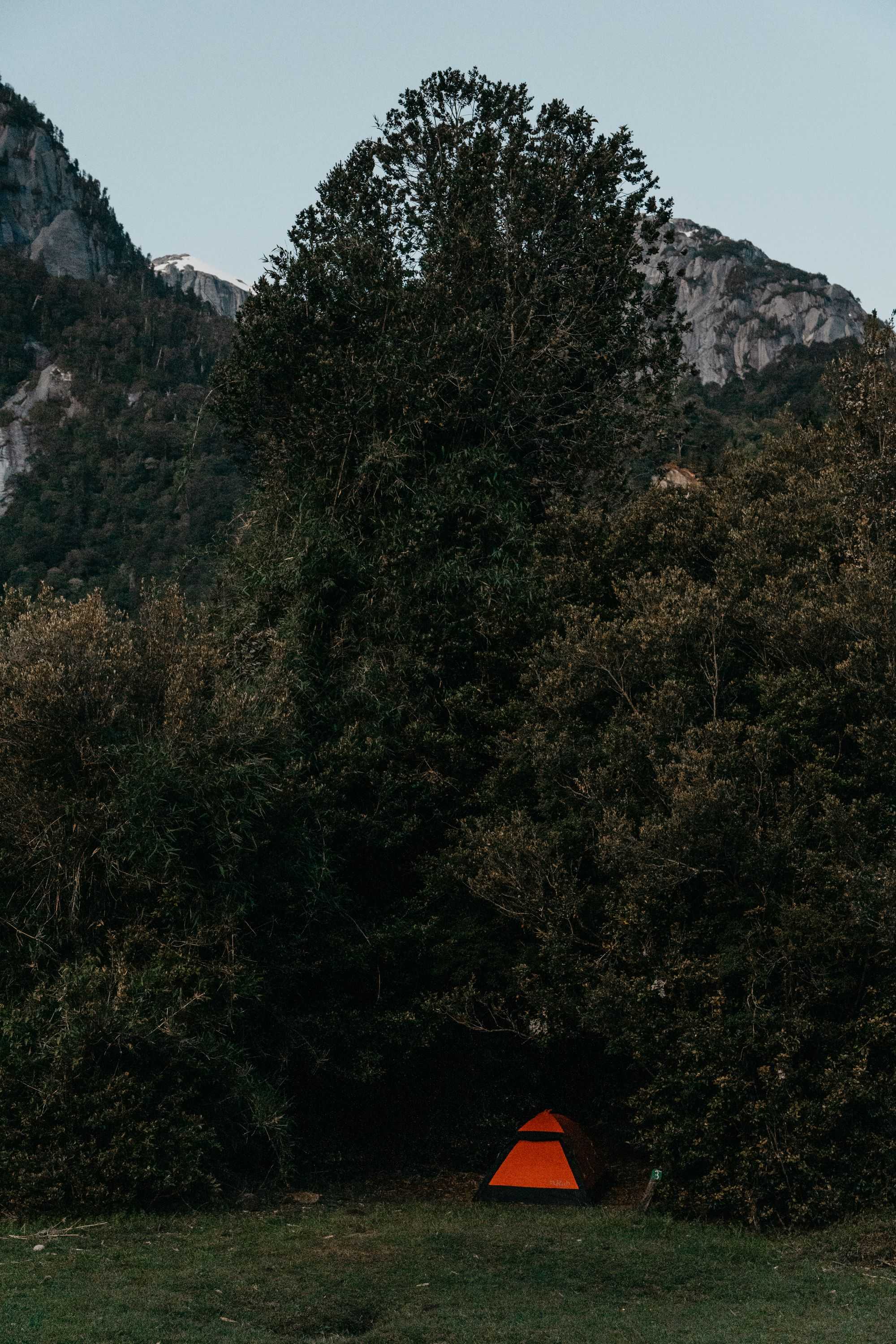
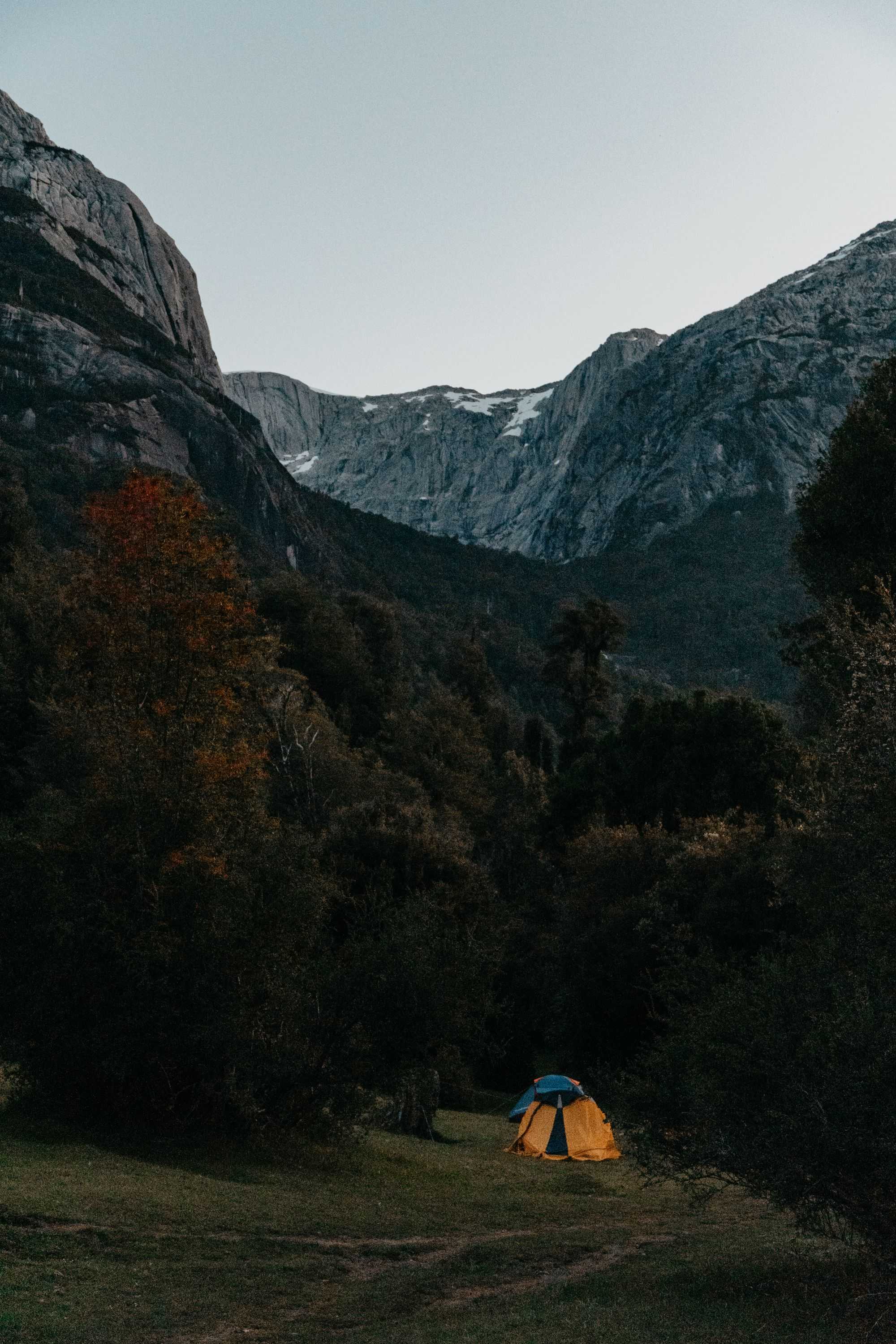
Geodesic tent
The geodesic tent is a special form of dome tent and has at least three poles that are crossed at several points (in contrast to the dome tent, which only has one crossing point). This creates a hemispherical tent. The geodesic tent is also free-standing and, due to its construction, extremely storm-proof.
+ Free-standing
+ High load capacity
- Higher weight
- Base area usually smaller
Lightweight tent
Lightweight tents come in all shapes, of course, as the weight depends largely on the material chosen. For very light models, however, ridge tents and pyramid tents are often found which use one (pyramid tent) or two (ridge tent) vertical poles instead of the pole arches. In practice, these can also be replaced by hiking poles or branches, which reduces the weight even further.
+ Very light
+ Flexible pitching
- Must be anchored
- Less wind resistant
Tent types
So much for the shapes. Most of them can be found in different designs and made of various materials.
Seasons
Depending on the season and the conditions in which you want to travel. These are referred to as 3-season or 4-season tents. The idea is that a 3-season tent leaves out what is only needed in more extreme conditions, such as snow, low temperatures, sand, strong winds, etc.
Features 3-season tent
- Outer tent does not extend down to the ground
- Inner tent has mesh, which cannot be closed additionally
- Thinner poles
Features 4-season tent
- Outer tent covers down to the ground (with additional snow flaps in some cases)
- Mesh can be additionally closed against snow, sand and the cold
- Stronger poles
- Additional guy ropes
The 3-season tent is comparatively lighter and better ventilated, while the 4-season tent can cope with harsher conditions... Those who never or only extremely rarely expect such conditions (individual nights can certainly be braved) would do well to opt for the lighter version.
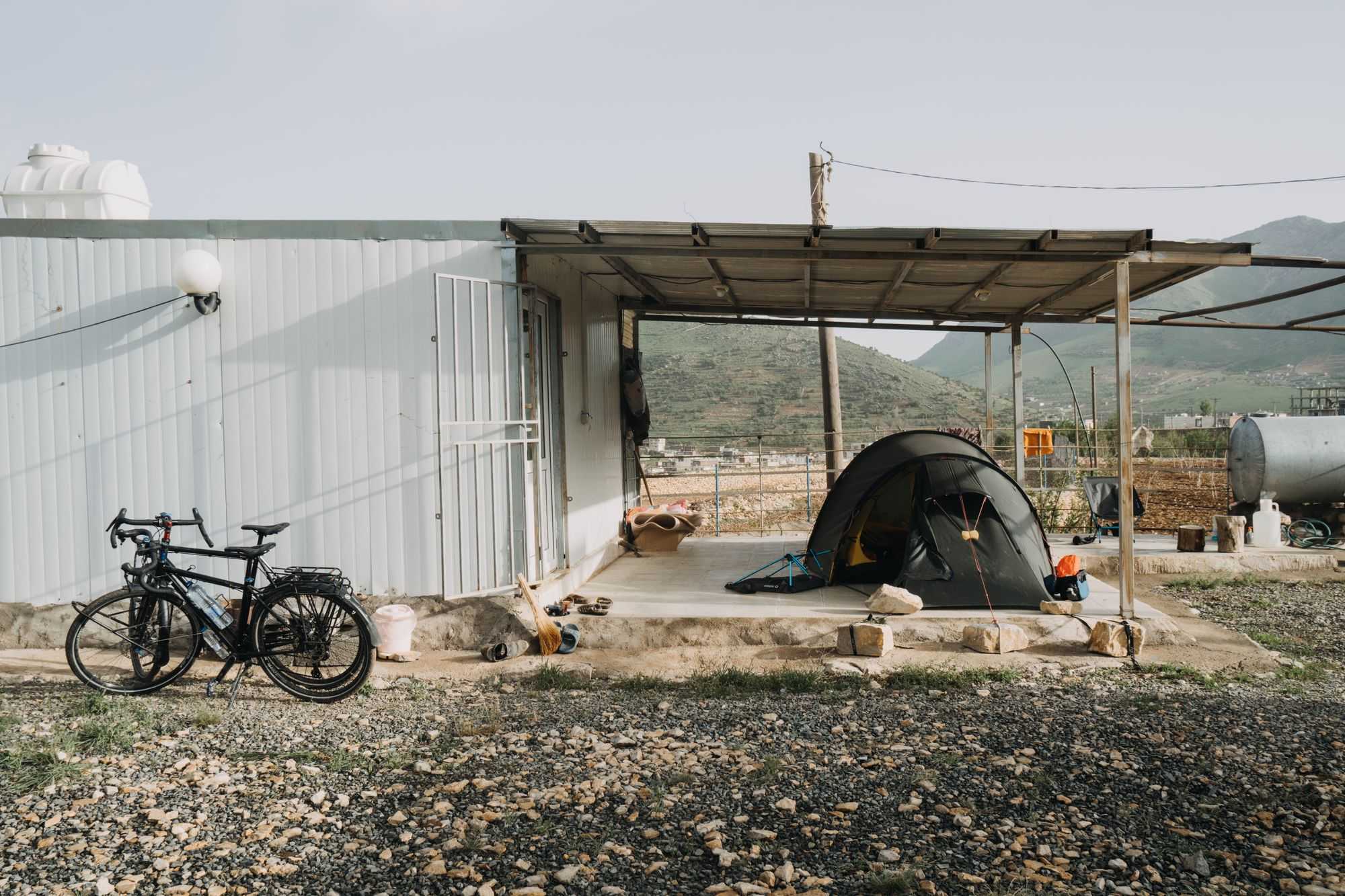
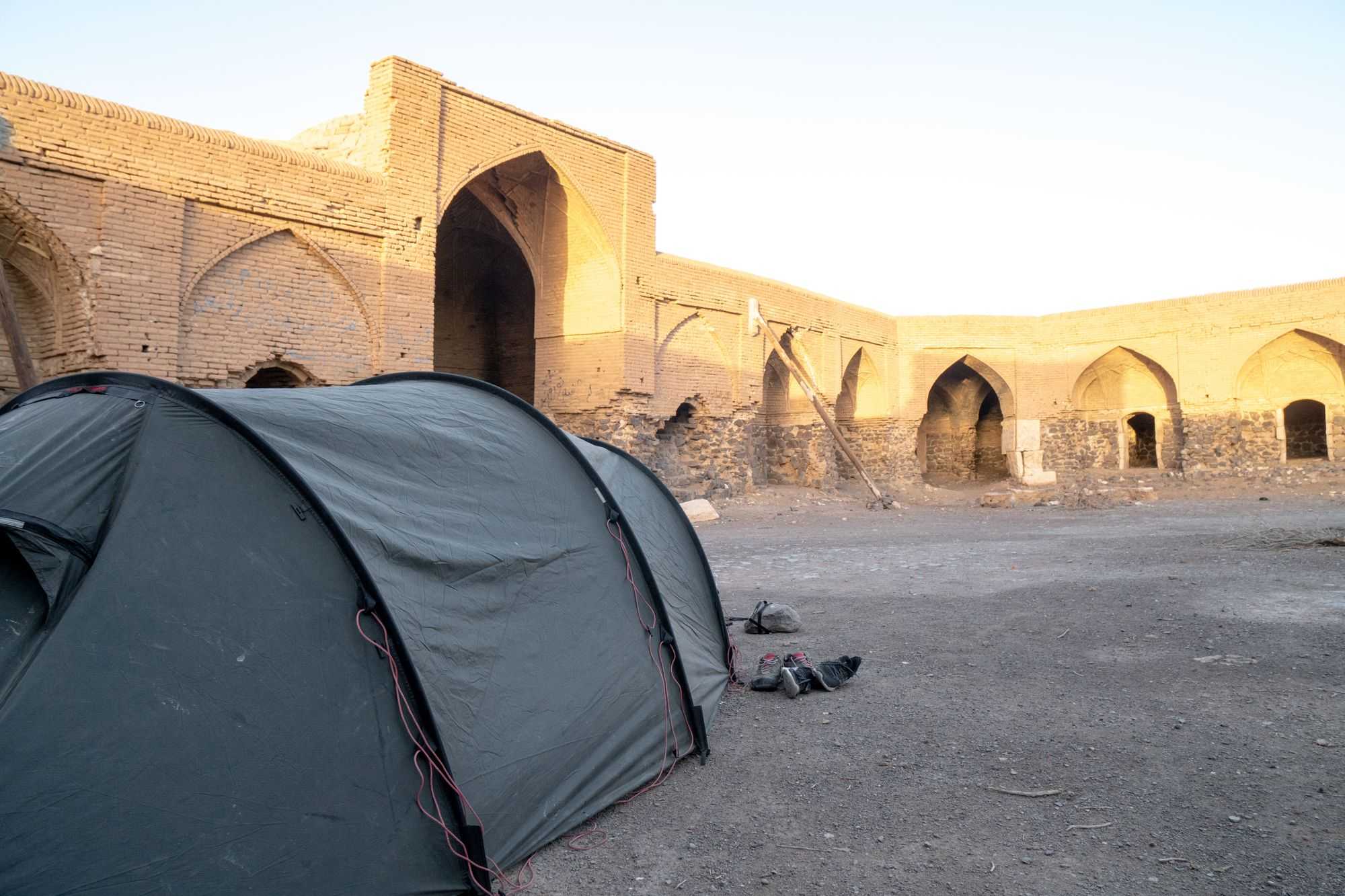
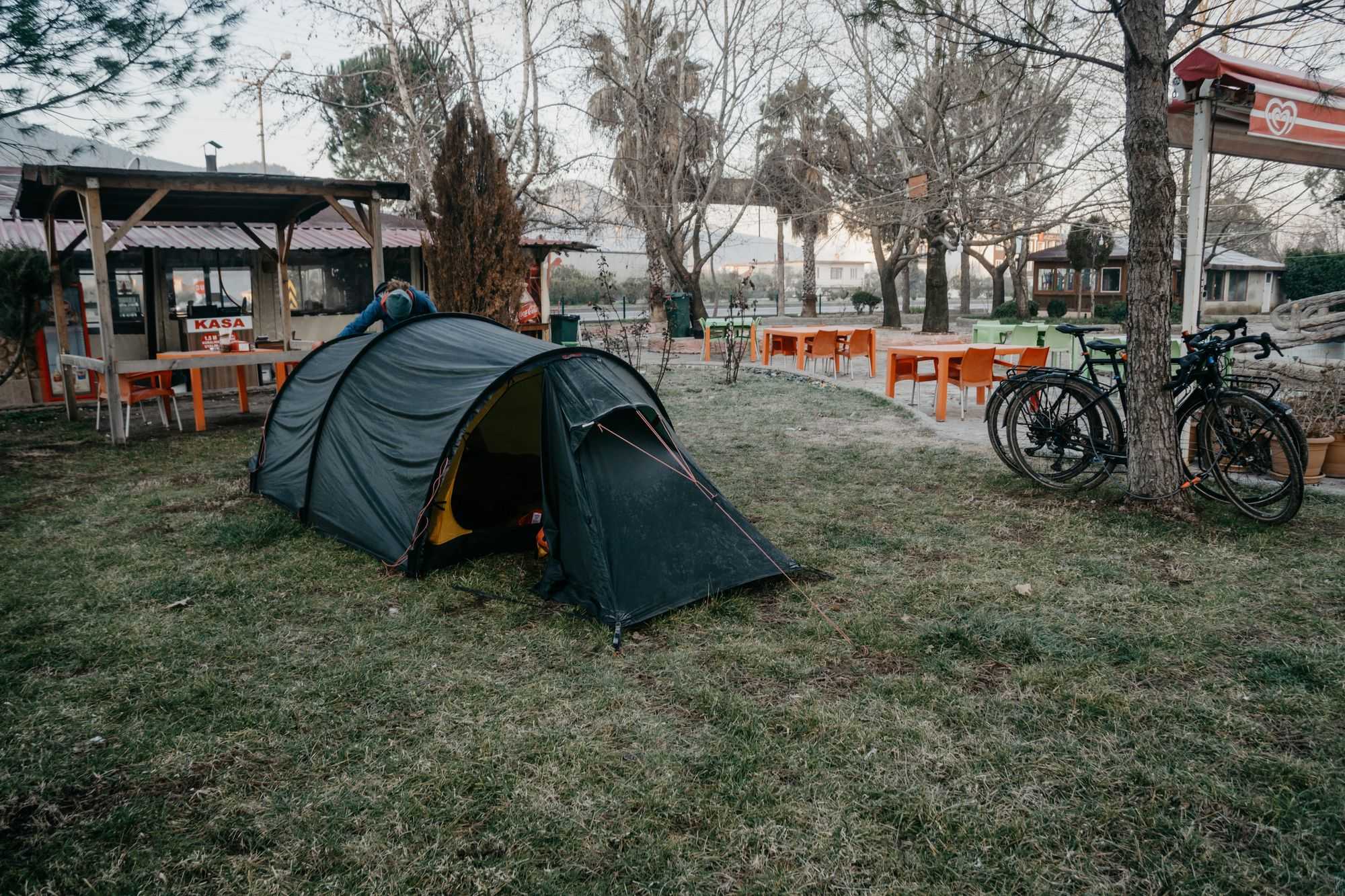
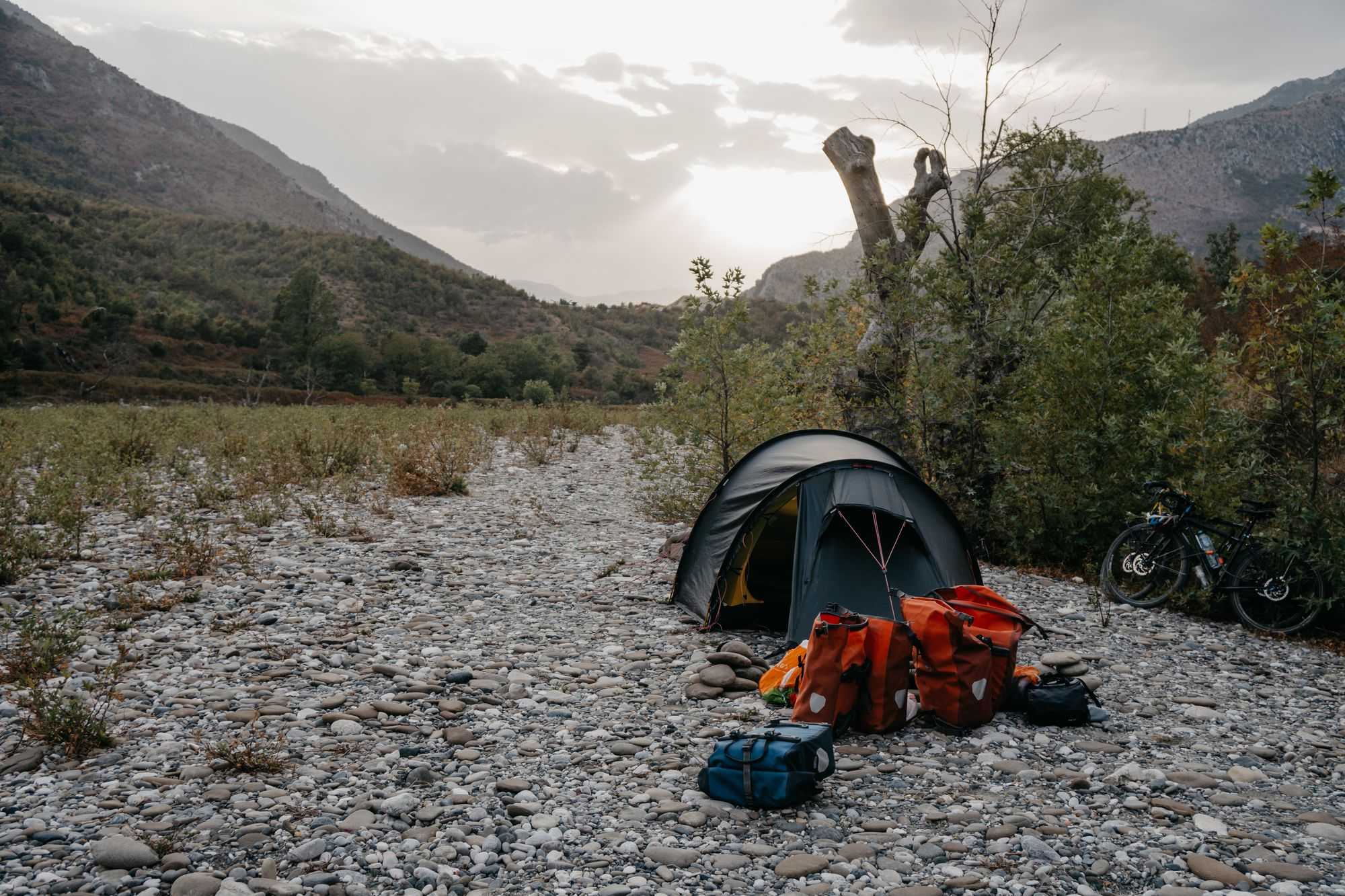
Material
Most tents are made of nylon or polyester fabric, which is coated with PU or silicone to make it waterproof. Silicone-coated ones are more tear-resistant, UV-resistant and durable. So it is mainly a question of price. The seams are sewn (with nylon or cotton thread, the latter swells with moisture and thus seals the seams) or glued and, depending on the case, additionally sealed. Different processes are often used for a tent (for example, for the floor and outer tent). The waterproofness of the fabric is given in millimetres of water column. Outer tents are considered waterproof from 1500 mm and tent floors from 2000 mm. But be careful, especially with the floor this is often not enough, as over 4000 mm of pressure can occur when kneeling, so higher values can make sense here, in general the differences between the various tents are huge at this point.
I would also like to mention the material Dyneema, which has found its way into tent production more and more in the recent past. This is a very light material, which is enormously resistant and has an extremely high water column. Only the high price and the 'rustling' can be listed as disadvantages here.
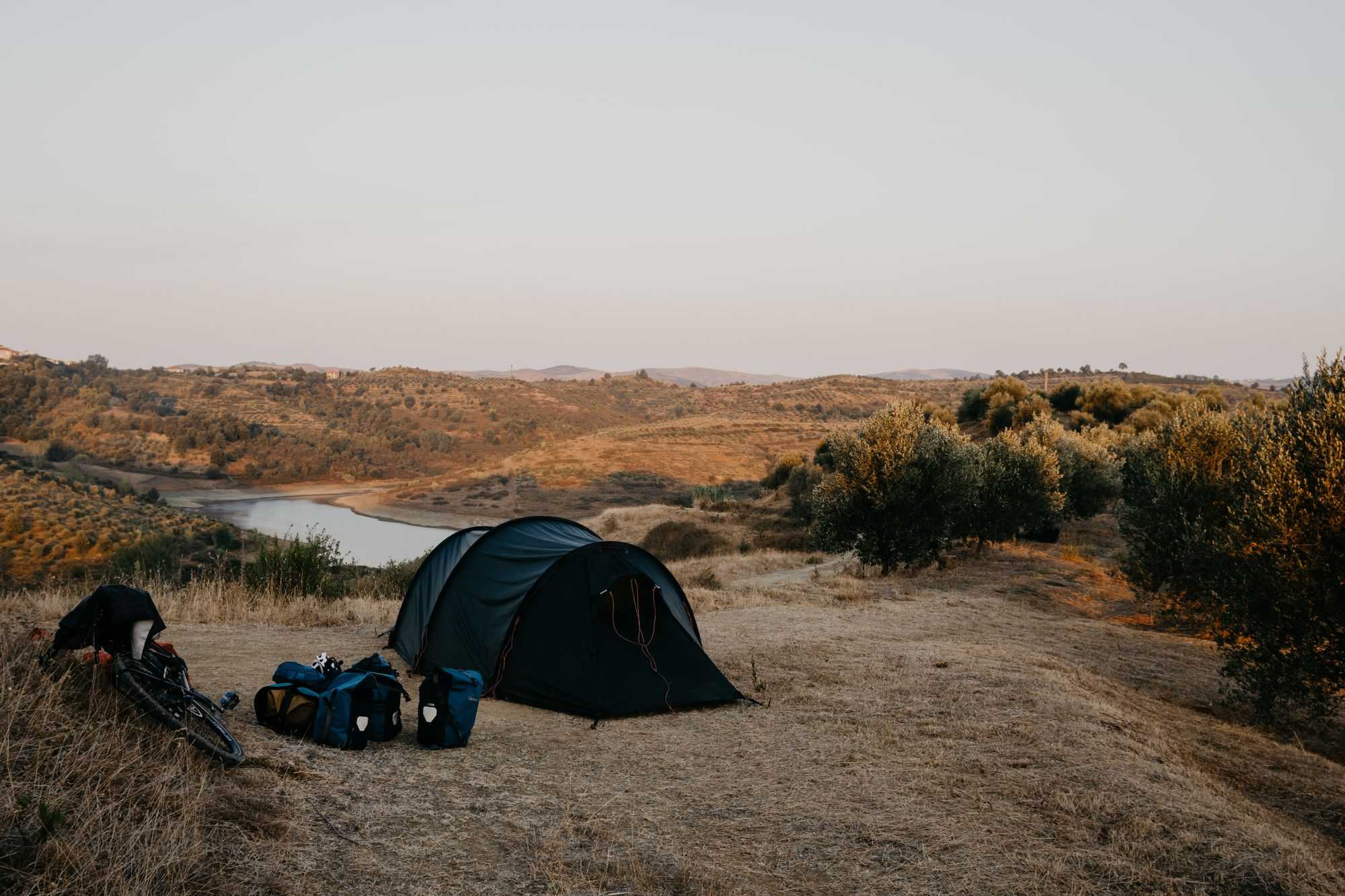
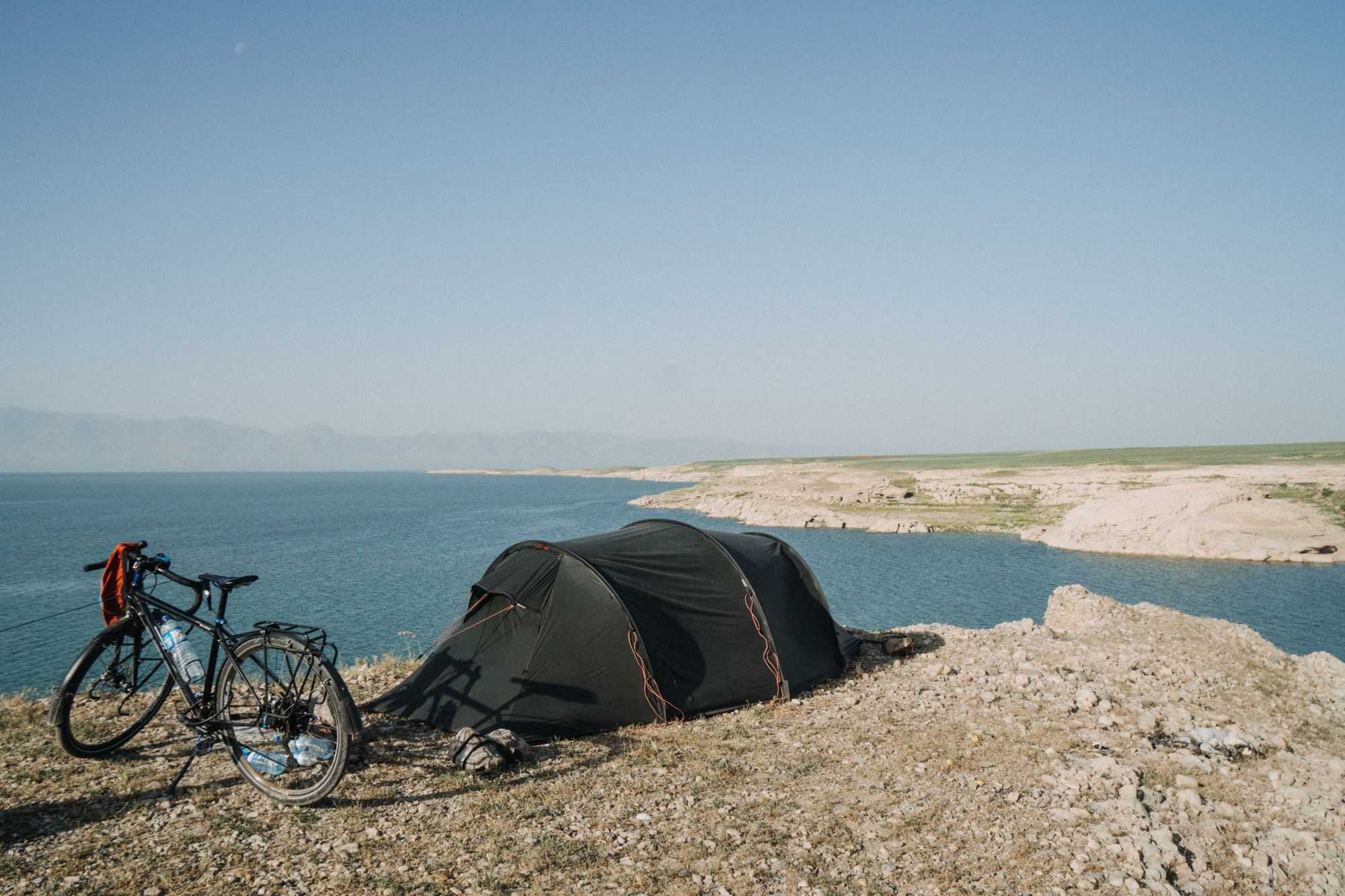
Selection
Ultimately, choosing a tent is always about balancing 'ability' and weight, finding the compromise that feels least like one. Since a tent is not usually bought just for one trip, it is worth considering future uses as much as possible. And of course the price also plays a certain role. It is therefore important to think carefully about the conditions under which the tent will be used, as these will ultimately determine the type and design of the tent. Here are a few questions that can help.
- How will I be travelling (on foot, bicycle, canoe, car, etc.)?
- What kind of weather/climate do I expect?
- What special features do I expect (snow, sand, etc.)?
- What does the ground look like (gravel, forest, sharp stones, etc.)?
- How much equipment will I have with me and will it have to fit in the tent?
- How much space do I have available for pitching?
And then there's no getting around testing. A tent that looks super spacious online can suddenly be too narrow for your needs in reality. That's why it's worth visiting a specialist shop and setting up and taking down the various tents and, above all, crawling inside them.
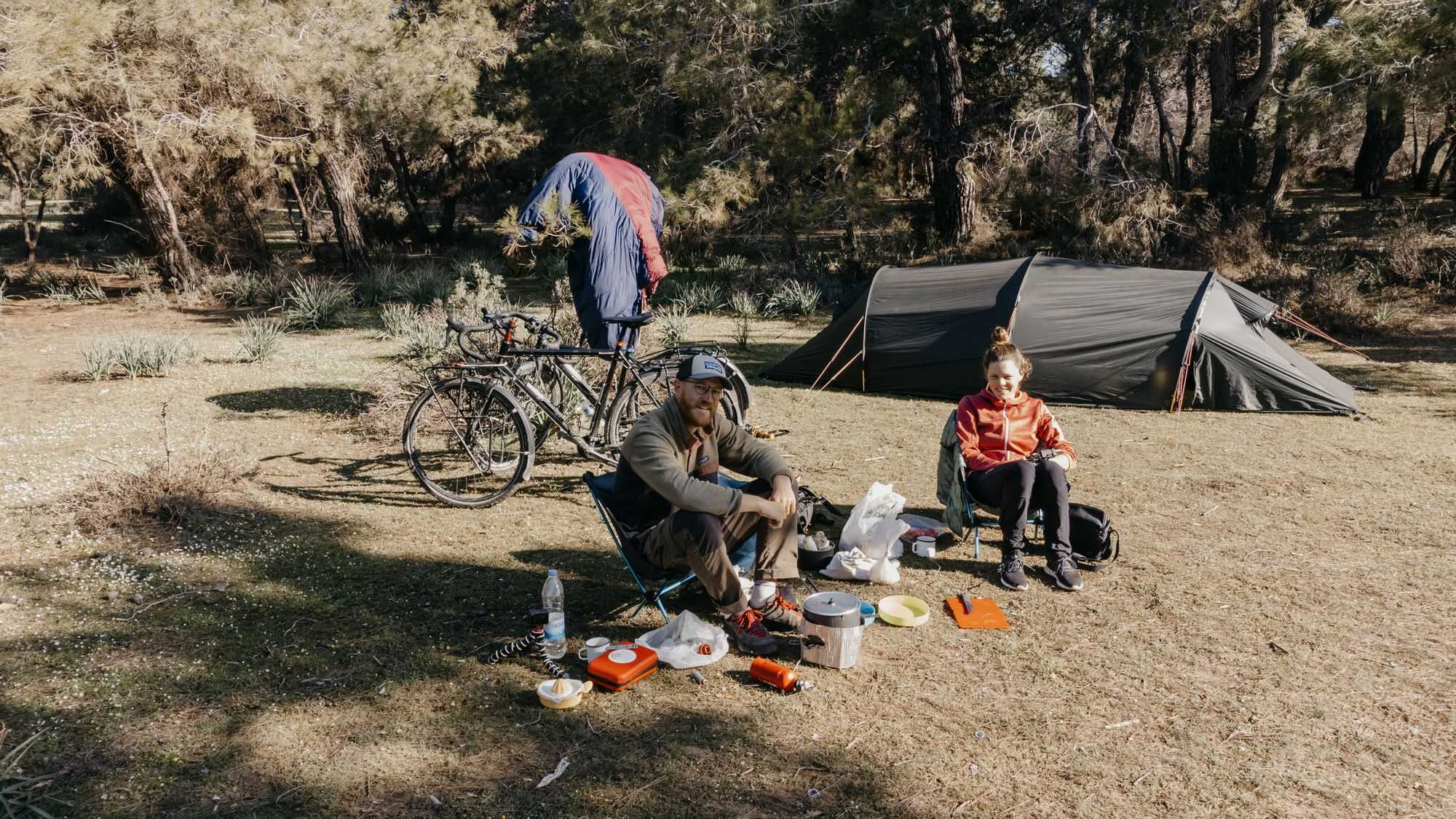
Our tents
On our trip, apart from the roof tent, we had two tents with us. One for the bike tour and then another for trekking. As the demands on the tent were so completely different, it made little sense for us to take the same tent for both parts of the trip. Of course, this is a luxury and with a few compromises, the whole trip could be done with one tent. Nevertheless, here are the considerations that went into our decision and the experiences we made.

In our first year with the bike, we had the Hilleberg Kaitum 3 with us. The Hilleberg tents are among the absolute top tents in terms of the strength and weather resistance of the material and this is also reflected in the price. Nevertheless, we didn't want to save on the tent, especially for the first year, as we knew that we would be spending the vast majority of our nights in it. So it had to be a home where we could feel comfortable and, above all, safe. Since we were travelling by bike, we could turn a blind eye to the weight. We also reckoned with a wide variety of conditions, such as heat, cold, sand, wind, etc. So it absolutely had to be a 4-season tent that could withstand everything. At the same time, we wanted to have a bit more space in the tent, especially in bad weather, which is why we decided on a 3-person tent. This paid off especially in the first weeks when it rained practically every day. So we could eat, play or pack our things in the tent. The special feature of the Kaitum is that it is built symmetrically and has two entrances, each with an awning. So both could claim one entrance each, which we enjoyed very much. Also, both awnings can be folded back to create a kind of tunnel, which provides a little more ventilation in higher temperatures. Another advantage of this model is that the inner tent does not lower at one end. This can cause wet feet for taller people, something you usually only notice after you have bought the tent...
After 10 months with this tent, we can say that it has absolutely proven itself. We haven't had any problems with moisture or strong winds and the material has withstood all stresses. Sometimes a self-supporting tent would have been easier, but with the help of stones and the like, we always managed to pitch the tent and tie it down well. Sometimes you just have to be a bit creative. So we can absolutely recommend the Kaitum for cycling trips and are already looking forward to many more nights in our little home.

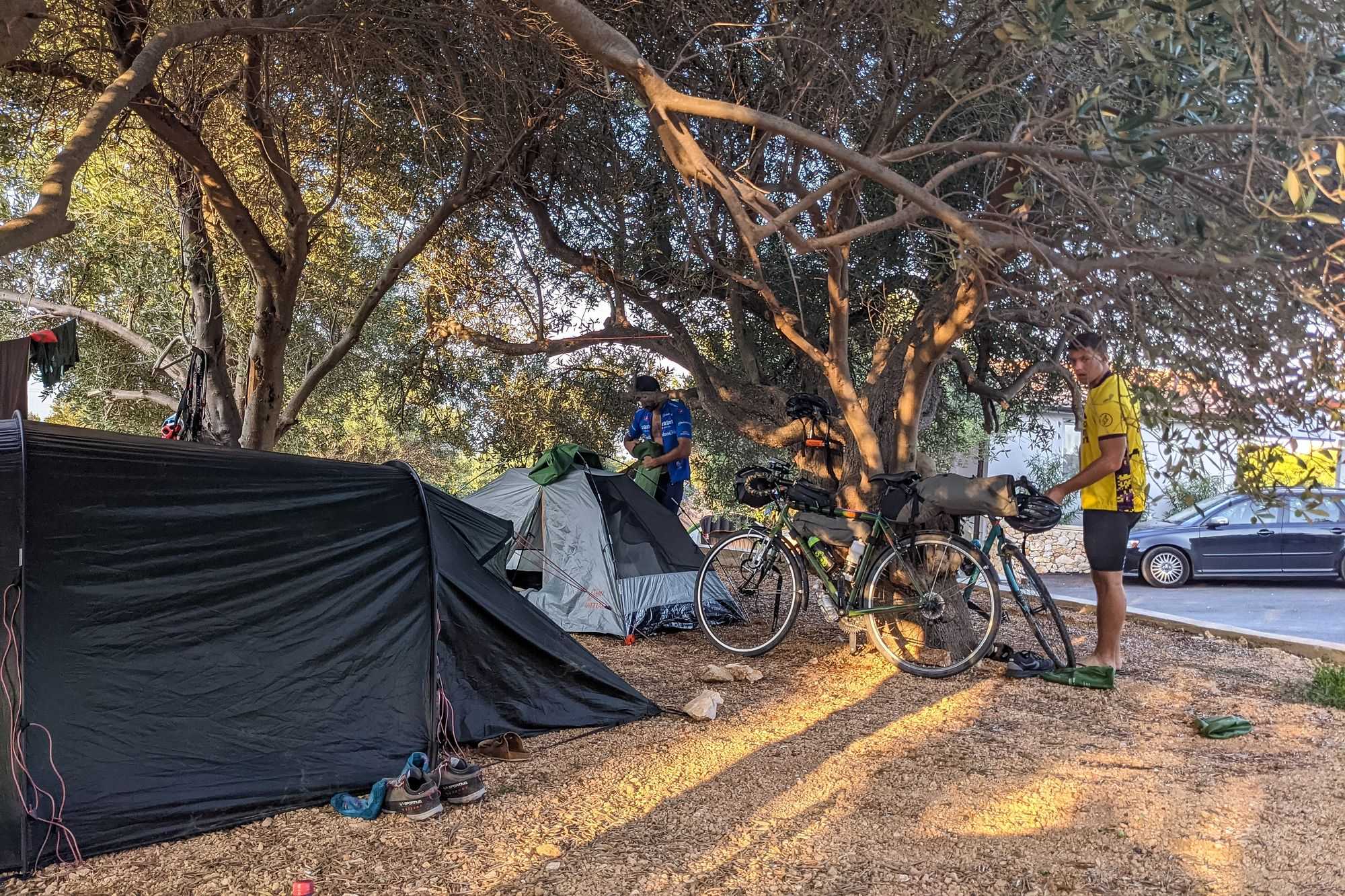
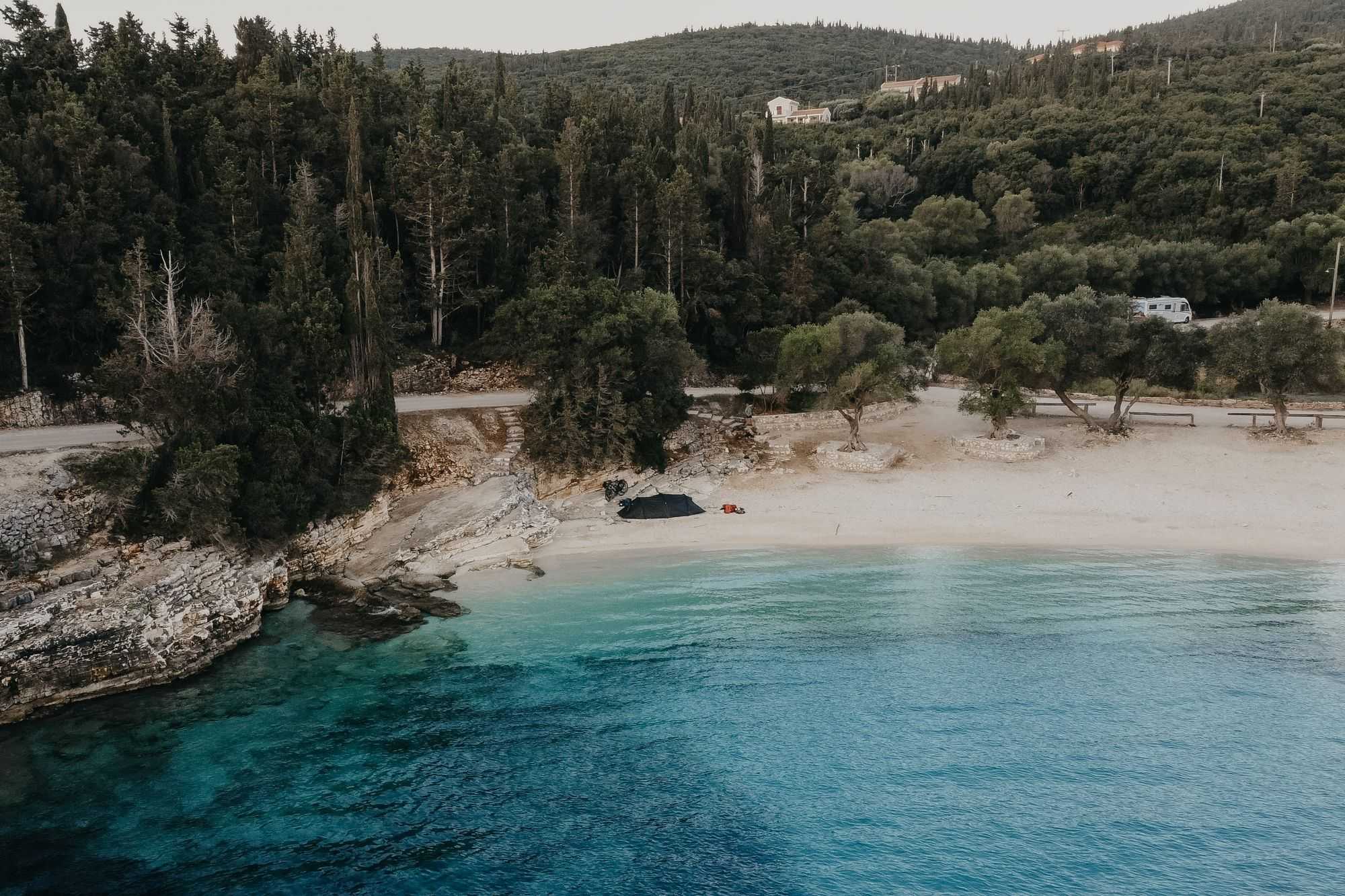
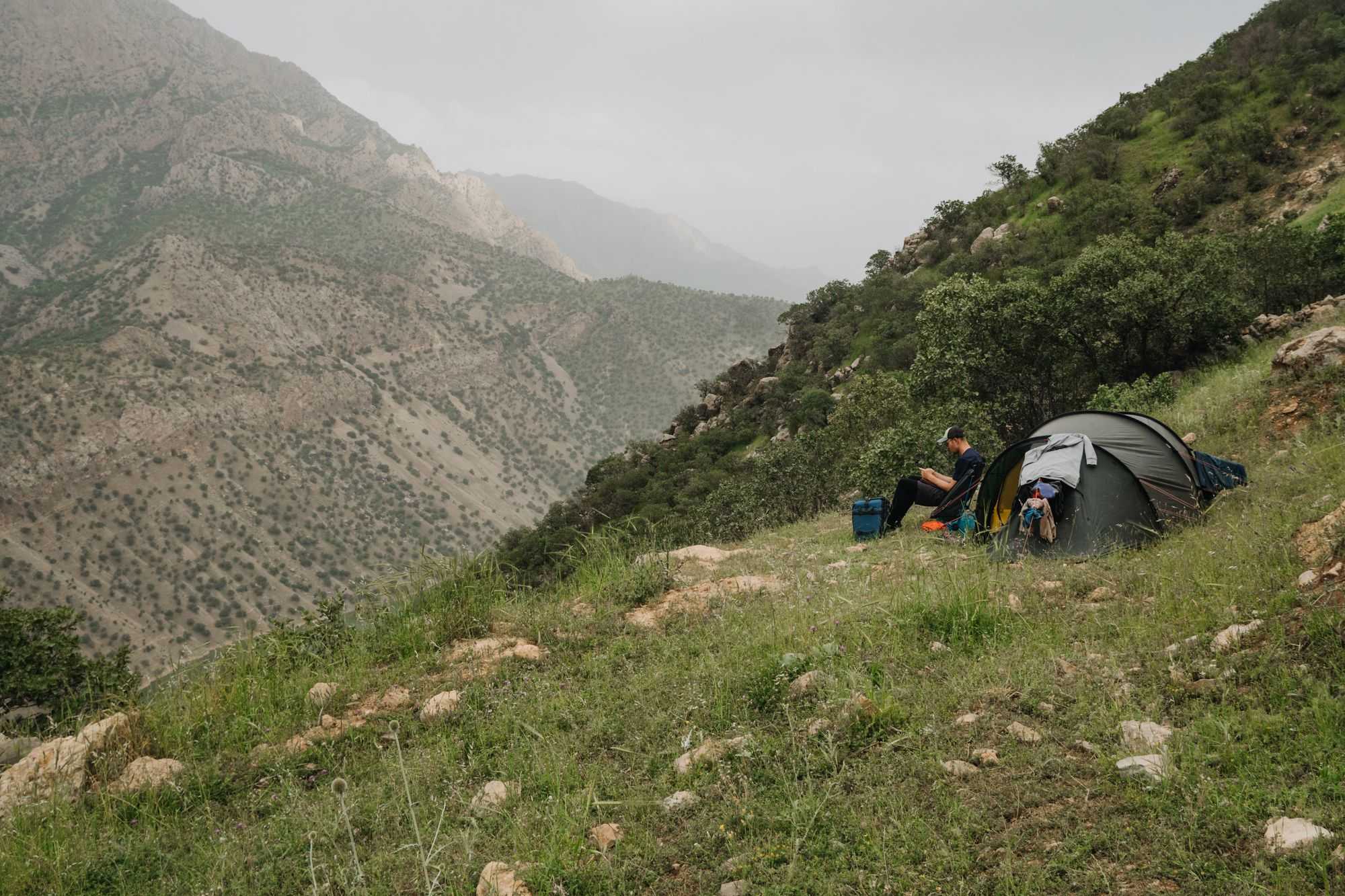
For the second part of our trip, we opted for the MSR Hubba Hubba NX 2. As we were backpacking, we needed a smaller tent that didn't take up so much space. We only wanted to use it in reasonably good conditions, so we could take a 3-season tent, which is of course also lighter. We also thought that this tent should complement our Hilleberg, so that both tents cover different areas, which also makes sense in the longer term. So there was no question that it had to be a lightweight dome tent for trekking and mountain tours. Since the Hubba Hubba does not have such a high water column and, as we heard from friends, this can be a problem, especially with the floor, we also took a footprint. This is a kind of extra floor that has the exact layout of the tent and can be placed underneath. We did very well with this setup, even if we sometimes missed our spacious Hilleberg a bit. However, at the latest when the backpack has to be packed and shouldered, this longing is blown away...
